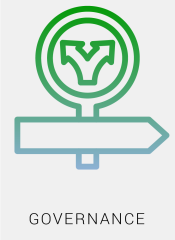
The challenge
The Department of Education and Training’s 75 digital channels provide digital content to external and internal audiences. Examples include electronic newsletters and emails, websites, social media, applications, information management, electronic records and intranets. The content on all channels is governed independently and the lack of an overarching governance framework for content presents risks to the Department such as:
– increased spend (e.g. on unnecessary duplication of technology, content and services)
– incorrect and contradictory messaging to the Department’s audiences
– failing to reach the audience
– audience fatigue due to too much communication and/or the wrong type of communication
– overall, a negative impact on the Department’s brand and the Victorian Government brand more broadly.
Our challenge was to develop a Digital Channels Governance Framework that identified the roles, responsibilities and structures for managing the lifecycle of content on all the Department’s digital channels.
Approach
We conducted a series of interviews and workshops with key digital channel owners and corporate stakeholders to understand:
– how digital channels were currently being managed
– the approach taken to corporate governance more broadly and how corporate risk was managed across the Department
– the roles of specific Divisions and teams in the proposed governance structure.
The research included 13 interviews with 18 executives across the Department and 4 workshops with 26 channel owners and key stakeholders. The workshops included:
– a SWOT (strengths, weaknesses, opportunities, threats) analysis of the current governance arrangements
– the completion of a RACI (responsible, accountable, consult, inform) framework for governance activities identified by Parisfirst as necessary for good management within the Department’s communication and corporate environment, and consistent with broader Victorian government digital channel governance requirements.
All interviews were conducted remotely.
This research informed the development of a framework that included a new:
– set of guiding principles
– illustrated model of recommended governance structures and responsibilities
– set of detailed roles and responsibilities
– suite of recommended standards and controls such as policies, standards, workflows and processes
– set of detailed KPIs to measure progress and success.
Thank you for all your work on this to date. You and the team have been great. It is a really good piece of work – comprehensive, clear and logical.
Outcomes
Key to our recommended approach to digital channel governance was embedding it into the Department’s broader corporate governance structure.
To achieve this we recommended setting up a new structure reporting into an existing and appropriate executive board, we wrote a detailed terms of reference for the operation of this new group, and advised the required changes to the terms of reference of the existing board.
Our set of recommended principles aimed to address the corporate and cultural behaviours contributing to inadequate and inappropriate digital channel oversight. Many of the KPIs we developed to assist in monitoring and evaluating the governance framework are aimed at measuring behaviour and culture change. A further recommended initiative to address culture change was to establish a digital channel community and practice.
We identified the positions, teams, divisions and groups who have governance responsibilities including the Secretariat to the new structure and allocated sets of specific governance activities to ensure good management and oversight, as well as meeting the broader Victorian Government digital governance requirements.
Our recommended standards and controls included the development of four new key policies to be signed off by the executive board for meeting Victorian Government compliance requirements, digital channel monitoring, evaluation and reporting and adequate resourcing for digital channels to maintain channel quality and performance over its lifetime.
Overall we are confident that our recommended framework sets out a clear new path to change the Department’s digital channel governance practices.

